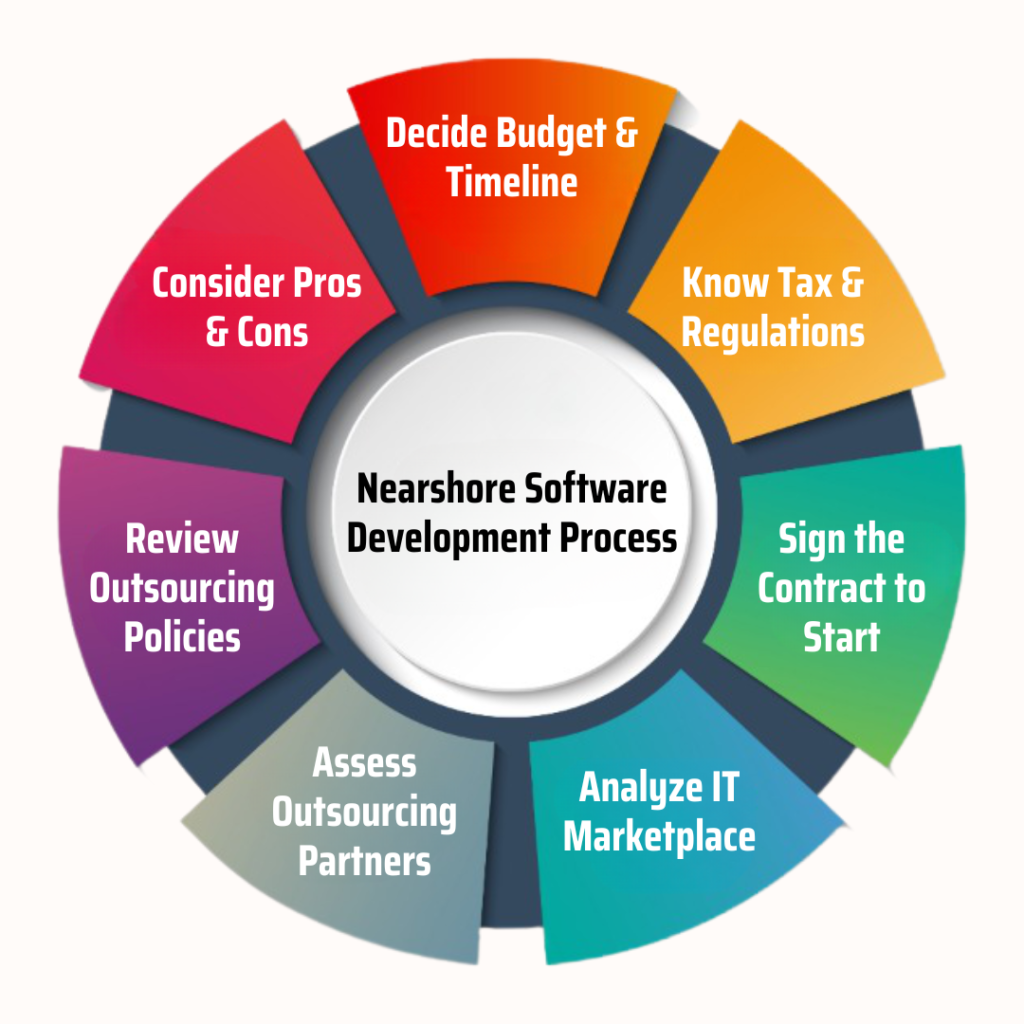Nearshore software development partner sets the stage for this enthralling narrative, offering readers a glimpse into a story that is rich in detail and brimming with originality. Exploring the benefits, challenges, and best practices of such partnerships adds depth to this intriguing discussion.
Overview of Nearshore Software Development Partners

When it comes to software development, nearshore software development partners play a crucial role in providing high-quality services to businesses. These partners are located in neighboring countries or regions, making communication and collaboration more convenient compared to offshore options.
Working with nearshore partners offers several advantages over offshore or onshore options. The proximity allows for easier communication due to shared time zones and cultural similarities. This results in faster response times and better alignment with project requirements.
Benefits of Nearshore Partners
- Cost-effective solutions without compromising quality
- Access to a diverse talent pool with specialized skills
- Convenient time zone alignment for real-time collaboration
- Enhanced cultural compatibility leading to smoother project execution
Services Offered by Nearshore Partners
- Custom software development
- Web and mobile application development
- Quality assurance and testing
- UI/UX design services
- Project management and support
Importance of Cultural Alignment, Nearshore software development partner
Cultural alignment with nearshore partners is crucial for successful project outcomes. Understanding cultural nuances and working styles can help in fostering better collaboration, communication, and overall project understanding. It also leads to a more cohesive team dynamic, resulting in higher productivity and efficiency.
Factors to Consider When Choosing a Nearshore Software Development Partner
When evaluating potential nearshore partners, there are several key factors to consider to ensure a successful partnership. Technical expertise and experience, communication, time zone compatibility, and the quality of work delivered are crucial aspects to look into.
Technical Expertise and Experience
Having a nearshore software development partner with the necessary technical expertise and experience is essential. This ensures that they can handle the complexities of your project efficiently and deliver high-quality results. Look for partners with a proven track record in your industry and relevant technologies.
Communication and Time Zone Compatibility
Effective communication is vital for the success of any project. When choosing a nearshore partner, consider their communication skills and whether they can easily collaborate with your team. Additionally, time zone compatibility is important to ensure that there are overlapping working hours for real-time communication and issue resolution.
Assessing the Quality of Work
To assess the quality of work delivered by nearshore partners, ask for references, case studies, and portfolio samples. Conduct thorough interviews to understand their processes, methodologies, and quality assurance practices. Look for partners who prioritize quality and have a proven track record of delivering successful projects on time and within budget.
Best Practices for Collaboration with Nearshore Software Development Partners

Effective collaboration with nearshore software development partners is crucial for the success of any project. Here are some best practices to ensure a smooth and productive working relationship.
Strategies for Effective Communication
Effective communication is key when working with remote nearshore teams. Some strategies to ensure clear and efficient communication include:
- Establishing regular communication channels such as video calls, chat platforms, and project management tools.
- Setting clear expectations and goals for each project milestone to avoid misunderstandings.
- Encouraging an open-door policy where team members feel comfortable sharing their ideas and concerns.
Tools and Technologies for Smooth Collaboration
Utilizing the right tools and technologies can greatly facilitate collaboration with nearshore partners. Some useful tools include:
- Collaboration platforms like Slack, Microsoft Teams, or Zoom for real-time communication.
- Project management tools such as Jira, Trello, or Asana to track progress and manage tasks efficiently.
- Version control systems like Git to ensure seamless code collaboration and integration.
Managing Cultural Differences
When working with nearshore partners, it’s important to be mindful of cultural differences to foster a cohesive working relationship. Tips for managing cultural differences include:
- Respecting and embracing diversity in perspectives and approaches to problem-solving.
- Investing in cultural awareness training for team members to better understand each other’s backgrounds.
- Organizing team-building activities to promote collaboration and understanding among team members from different cultures.
Establishing Trust and Transparency
Building trust and maintaining transparency are essential for successful nearshore partnerships. Ways to establish trust and transparency include:
- Setting clear expectations and deliverables from the outset to build confidence in the partnership.
- Providing regular updates and progress reports to keep all stakeholders informed and involved in the project.
- Being open and honest in communication, addressing issues promptly, and seeking solutions collaboratively.
Case Studies of Successful Nearshore Software Development Partnerships
Partnering with nearshore software development firms has proven to be beneficial for many companies. Let’s explore some real-world examples of successful collaborations and the key takeaways from these partnerships.
Case Study 1: Company A and Nearshore Firm X
Company A, a leading e-commerce platform, faced challenges with scaling their application to meet increasing user demands. By partnering with Nearshore Firm X, known for their expertise in scalable solutions, Company A was able to overcome these challenges.
- Challenges: Company A struggled with slow loading times and frequent crashes due to the high volume of user traffic.
- Solutions: Nearshore Firm X implemented a cloud-based infrastructure and optimized the codebase for improved performance.
- Outcomes: Company A saw a significant decrease in loading times and an increase in overall system stability, leading to higher user satisfaction and retention.
- Key Takeaways: Effective communication, expertise in scalability, and a proactive approach were key factors in the success of this partnership.
Case Study 2: Company B and Nearshore Firm Y
Company B, a healthcare technology provider, needed to develop a secure telemedicine platform within a tight deadline. By collaborating with Nearshore Firm Y, known for their expertise in healthcare software, Company B was able to deliver the project on time.
- Challenges: Company B faced regulatory compliance issues and data security concerns that required specialized knowledge.
- Solutions: Nearshore Firm Y provided guidance on compliance requirements and implemented robust security measures to protect patient data.
- Outcomes: Company B successfully launched the telemedicine platform within the deadline and received positive feedback from healthcare professionals and patients.
- Key Takeaways: Domain expertise, adherence to regulations, and a focus on data security were crucial for the project’s success.
Final Review: Nearshore Software Development Partner

In conclusion, nearshore software development partners bring a unique blend of expertise, culture, and collaboration to the tech industry landscape. By understanding the key factors, best practices, and real-world examples, companies can unlock the full potential of these partnerships for successful project outcomes.
FAQ Section
What sets nearshore software development partners apart from offshore or onshore options?
Nearshore partners offer a balance of cost-effectiveness, cultural alignment, and proximity for better collaboration.
How can companies ensure effective communication with remote nearshore teams?
Utilizing digital collaboration tools, establishing regular check-ins, and respecting time zone differences are key to successful communication.
What are some strategies for managing cultural differences in nearshore partnerships?
Encouraging open dialogue, embracing diversity, and promoting cross-cultural training can help bridge cultural gaps in partnerships.
